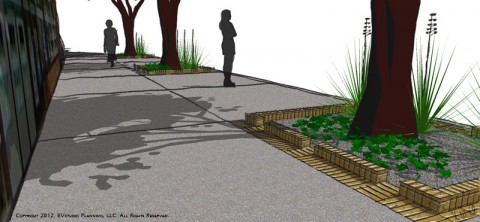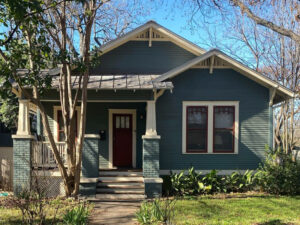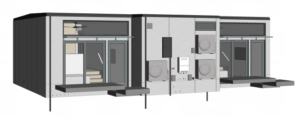The urban landscape can be a complicated environment for a successful landscape. Variables of vegetation forms, types, tolerances and aesthetics must be carefully calibrated for a successful streetscape.
Also important is how the landscape can assist in storm water drainage management. We practice with a careful balance of infiltration, providing infiltration wherever feasible, but not to the degree that it has an adverse affect on the economic of a project. Rather than getting into the fine details of the balance that we consider, we suggest the book Light Imprint Handbook: Integrating sustainability and community design. Although, very similar to the practices of Low Impact Development (LID), Light Imprint suggests prioritizing a strong community and greater density by occasionally putting storm water into a pipe water to be infiltrated in a location of a lower transect.
In the practices of LID, we strive to infiltrate precipitation before it becomes “storm water”. The following graphic illustrates an urban landscape that our civil engineering and landscape teams are working on in Austin, Texas. (This particular design is in the review process for the City of Austin at the time of publishing this post). You will note the use of pavers in the creation of our tree wells along Airport Boulevard (this area is a part of Austin’s form-based code). The pavers vary in the orientation creating a vertical barrier to limit pedestrian compaction, yet allowing openings for water to infiltrate at the tree and plantings. Careful consideration and design has occurred in the tree well (visible and invisible) to assure proper root growth, pavement resilience and an aesthetic value for the streetscape.

We have written about some of these items before in the posts Urban Tree Selection; Urban Street Tree Root Barrier; Urban Streetscape Process










